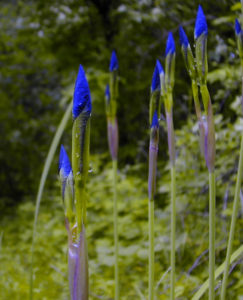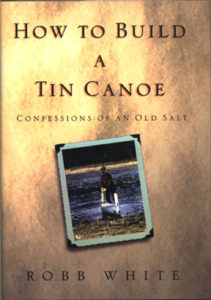Let’s Get Us a Real River!
an essay by Jeff Potter
The Red Cedar is the second biggest feature of our local natural heritage (first being farmland). But the river is vastly under-maintained, even though it’s vital to us. We impact it a lot and have great expectations of it. Why not see if there might be a way to improve the situation and start reaping the benefits that a quality river can give?
What’s the river like now? A muddy ditch with a mucky bottom that floods when it doesn’t dry up. It’s a flood, erosion and recreation hazard and a community deficit overall, sad to say, despite some nice aspects.
What’s our relation to it? For one thing, we need our river for drainage, just like we need our system of drainage ditches. But I suspect we really wish we had a river we could be proud of in every way. And why not? If properly handled, a river not only drains, but builds topsoil, controls flooding, limits erosion, and nurtures a myriad of flora and fauna…and people, too! Not all rivers are responsive to handling, of course, but improving our situation might be easier than it seems.
The Red Cedar is a straightish, open river so it needs lots of water retention in the surrounding land if it’s not to flood, scour or dry up. But we’ve vastly reduced our county’s water retention, but because we’ve altered it one way and ruined its natural functioning, maybe there’s something responsible we can do to offset that in another way. That ‘something’ might have to do with going back a step to altering that straight nature of the river to make it more tolerant of drastic flow surges and cut-off. Straight needs a swamp. Not enough swampland, gotta reduce the straightness.
I’ve come up with a possible solution, based on my observation of a couple other cases. The first being the new rapids project in downtown Williamston which looks to reclaim a nasty zone. Second is the luck other communities have had using flow-blockers to reclaim similarly nasty waterways–Boulder, Colorado in particular.
Here’s the notion…
The Red Cedar has many narrow, steep-sided banked areas, in addition to flood-plains. These banked areas are often bordered by farmland and plenty of access.
It might be possible to cheaply get ahold of safe rock, brick and concrete fill which could be trucked into a couple dozen access points to banked areas of the river…then dumped from both sides of the river. That’s all we’d have to do. (Then tidy up.) Maybe we could even be paid for accepting such fill. The rockpiles would create partial blockages of the river with openings in the center (and drainage throughout). The new pools would hold a lot of water and fish. The river would dry up to a lesser extent. Flooding and erosion would be controlled. Topsoil would be saved. Plants and trees would flourish at and near the newly stabilized banks. The water would become clearer and the bottom would firm up.
We who paddle the river have probably already noticed that some river neighbors have built their own mini fieldstone flow-blockers in the waterway in front of their homes. Even such small projects seem to improve the river in the surrounding vicinity. Let’s just step up the idea a few notches.
It may well be that only a relatively small amount of strategic flow-stabilizing would push the river ‘over the hump’ into an improved flow pattern. These flow-blockers are not extreme projects which greatly alter flow to create mini-lakes or anything. They’re just small stabilizing elements that the ecocycle might benefit from quickly.
Can we afford to neglect something which is a vital part of our infrastructure, and our heritage and which offers so many potential community benefits at possibly not much cost?



